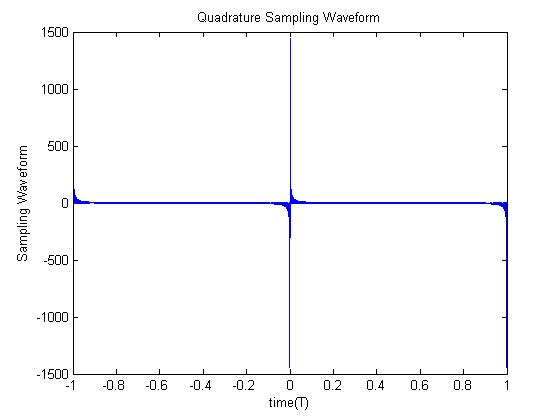ASN10 - Quadrature sampling demonstration: Difference between revisions
Jump to navigation
Jump to search
Jodi.Hodge (talk | contribs) No edit summary |
Jodi.Hodge (talk | contribs) No edit summary |
||
| (6 intermediate revisions by the same user not shown) | |||
| Line 1: | Line 1: | ||
[[Jodi Hodge|Back to my home page]] | [[Jodi Hodge|Back to my home page]] | ||
Assignment was actually done in class by professor. | Assignment was actually done in class by professor. Classmate [[Max Woesner ]] has posted the Octave code and plot. | ||
In Octave we were to plot | |||
<math> \frac{2}{T} \sum_{n=1}^\infty sin\bigg (\frac{2 \pi nt}{T}\bigg) \!</math><br><br> | |||
<pre> | <pre> | ||
clear all; | clear all; | ||
| Line 33: | Line 28: | ||
ylabel('Sampling Waveform') | ylabel('Sampling Waveform') | ||
</pre><br> | </pre><br> | ||
[[Image:Quadrature sampling.jpg]]<br> | [[Image:Quadrature sampling.jpg]]<br> | ||
Latest revision as of 17:20, 18 December 2009
Assignment was actually done in class by professor. Classmate Max Woesner has posted the Octave code and plot.
In Octave we were to plot
clear all;
close all;
sum = 0;
T = 1;
t = -T:0.0001:T;
N = 1000;
for n = 1:N;
if n==0
h = 0;
else
h = 2/T;
end
sum = sum+h*sin(2*pi*n*t/T);
end
plot(t,sum)
title('Quadrature Sampling Waveform')
xlabel('time(T)')
ylabel('Sampling Waveform')
